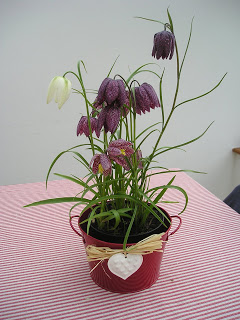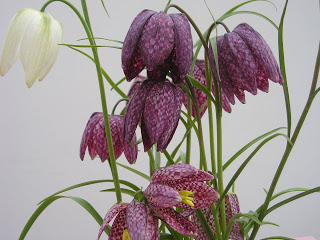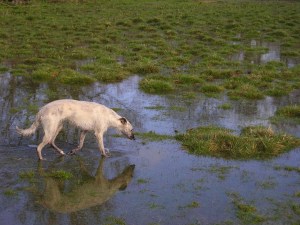So the Easter holidays are with us once again: a time of our gardens and countryside bursting with new vigour, the smell of fresh, green growth, gentle, warming breezes and longer daylight hours to enjoy it all.
Primroses and violets are the traditional wild flowers of Easter and our lawn is dotted with dozens of them. We avoid mowing them when in flower, after that we don’t worry yet the numbers increase with every passing year.

 The pretty, native Wood Anemone, Anemone nemerosa, blooms in profusion in favoured places – usually in sheltered woodland. Sometimes they are found on banks, perhaps showing where ancient woodland once stood, for Anemone nemerosa is one of the ‘indicator’ plants. Ancient woodland is classified in England as woodland growing prior to 1600 and although a number still stand many were cleared centuries ago.
The pretty, native Wood Anemone, Anemone nemerosa, blooms in profusion in favoured places – usually in sheltered woodland. Sometimes they are found on banks, perhaps showing where ancient woodland once stood, for Anemone nemerosa is one of the ‘indicator’ plants. Ancient woodland is classified in England as woodland growing prior to 1600 and although a number still stand many were cleared centuries ago.
 The Snake’s Head Fritillary, Fritillaria meleagris, is an extremely rare plant in the wild although there are water meadows around Oxford and the Cotswolds where they carpet the ground – a spectacular sight. Fortunately, they grow quite easily in our gardens and the corms are readily available from reputable bulb merchants, who only source them from grown stock. Sadly, there are still occasions when bulbs and corms are marketed from illegally collected wild stock.
The Snake’s Head Fritillary, Fritillaria meleagris, is an extremely rare plant in the wild although there are water meadows around Oxford and the Cotswolds where they carpet the ground – a spectacular sight. Fortunately, they grow quite easily in our gardens and the corms are readily available from reputable bulb merchants, who only source them from grown stock. Sadly, there are still occasions when bulbs and corms are marketed from illegally collected wild stock.
They make fine, if somewhat short-lived house plants. We like to have them indoors at Easter and they can afterwards be planted in the garden to bloom again another year. When seen close-up, it is obvious from their markings why one old name that country folk give to them is Chequers.
 It is not only flowers at Easter that should be thriving. The wild birds are singing and building their nests and sheltered beneath a large clump of Oat Grass, the wild Mallard duck, lay their eggs each year in our garden. As soon as they hatch, their mother leads them to the safety of the river below the house.
It is not only flowers at Easter that should be thriving. The wild birds are singing and building their nests and sheltered beneath a large clump of Oat Grass, the wild Mallard duck, lay their eggs each year in our garden. As soon as they hatch, their mother leads them to the safety of the river below the house.

This is the joy of Easter – or it usually is. Not in 2010. The primroses and violets may be blooming but the weather is more of winter than spring with the season up to six weeks behind this year. There is hardly a leaf showing on the trees and bushes of the secret valley and the river has burst its banks with the continuous rain we have had the past few weeks. Any duckling that ventured onto the water would soon be swept away in the torrent our gentle stream has become.
However, She-dog is thoroughly enjoying running through the flood waters – especially where it is shallow enough to admire her reflection!




